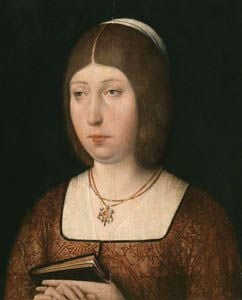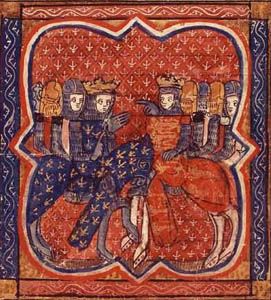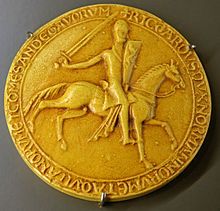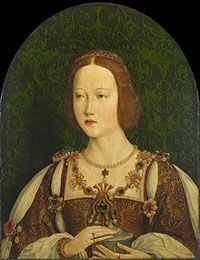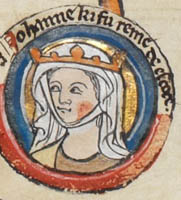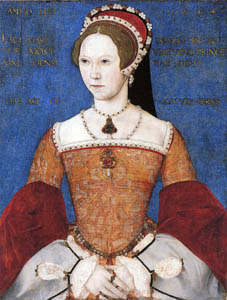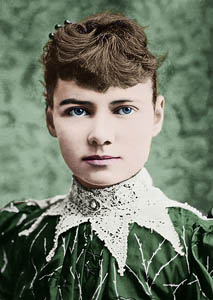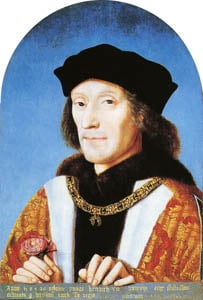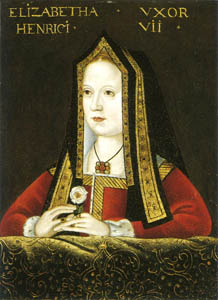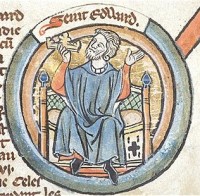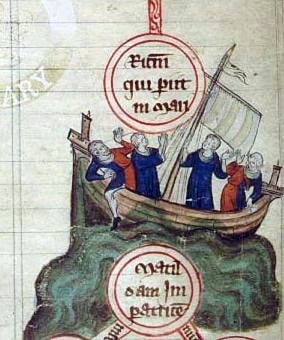On This Day: Death of Katherine Swynford
Posted on
On this day, 10th May 1403, one of medieval England's most well-known, or notorious (depending on your point of view) women passed away. Given how her life had caused such a scandal, it comes a bit of a surprise to know that her passing was barely noted by the chronicles of the time.
A Respectable Wife
Katherine de Roet was the daughter of a minor nobleman from Hainault, now in modern-day Belgium. He came to England in the service of Philippa of Hainault on her marriage to Edward III of England, and Katherine was raised in the royal nursery in the company of the princes and princesses of England. She was married to a rather impoverished English knight, Hugh Swynford, and Katherine Swynford became the name that history remembered her under. Her husband's manor was at Kettlethorpe in Lincolnshire, but the land was poor and the family often struggled for money. Katherine had several children by Hugh (the exact number is difficult to confirm) and raised them at Kettlethorpe.
Hugh's death around 1371 or 1372 left Katherine in dire financial straights. However here her Royal connections helped. Katherine had served in the household of John of Gaunt in the past, and as a widow she was taken back in to his household, where she was put in charge of the ducal nursery. At some point during this part of her life, she and John began their affair. Their first child was a son named John, who was born some time in 1373.
Infamous Mistress
But while Katherine was widowed, John wasn't. His first wife, Blanche of Lancaster, had died but he had married a second time to a Spainish princess, Constance of Castile. This marriage was not particularly happy, and John may have had several affairs before he and Katherine began their relationship. Katherine went on to have three sons and a daughter by John, who were given the surname "Beaufort".
Even though they were discreet, the news of their affair got out eventually, and Katherine was slandered as a whore in the chronicles. Public opinion had swung against John, and the news of his relationship didn't help. During the Peasant's Revolt John's beautiful Savoy Palace was looted and burned to the ground, and he seemed to take this as a sign of divine disapproval for his behaviour. He and Katherine ended their relationship, and John settled down to focus on his wife and her Castilian inheritance.
Scandalous Marriage
This separation would not last. Several years later their relationship was resumed, and when Constance died in 1394 John further scandalised the country by marrying Katherine. The poor noblewoman of no particular family was suddenly elevated to the position of Duchess of Lancaster, making her second in the land after the Queen of England. People couldn't complain too loudly though, as King Richard II, John's nephew, seemed to approve the match, and no one would argue too loudly with the king.
Katherine outlived her husband by four years, and spent her widowhood quietly. She was welcome at court by King Richard, and then later by her stepson King Henry IV, but she appears to have spent most of her time in Lincolnshire. On her death she was buried in Lincoln Cathedral, and in time her daughter Joan Beaufort would be buried next to her. Her Swynford children had distinguished enough careers, but it was her Beaufort descendants by John that would go far. In 1485 her great great grandson, Henry Tudor, would claim the throne of England, and make her an ancestress of the English royal family.
If you're a fan of Katherine Swynford, check out her badge!
